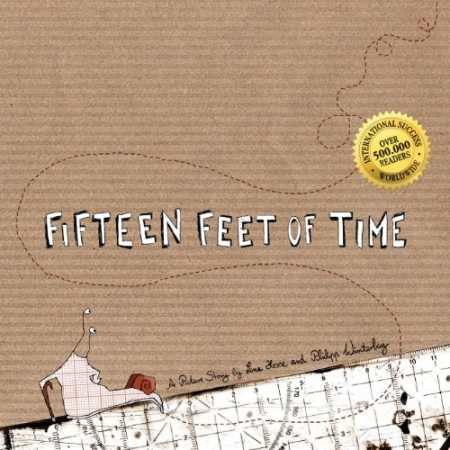
Fifteen Feet of Time
A Picture Story by Lena Hesse and Philipp Winterberg
Adults and kids alike will get lost in the whimsical story and textured art of Fifteen Feet of Time.
With Fifteen Feet of Time: A Picture Story by Lena Hesse and Philipp Winterberg, the authors have written a picture book whimsical enough for children, but with a message that’s more squarely directed at parents.
The story revolves around the anthropomorphized animal (and occasional object) citizens of a crowded and busy fictional city. A hunchbacked snail takes so long to cross a street that traffic is delayed, and many of the affected animals are jarred from their unthinking, everyday routines to do things for which there was never enough time before.
A frog who announces the weather for a TV station climbs the tallest building he can find to bask in the sun’s rays. A violin delayed on its way to a concert is inspired to give an impromptu performance for whoever happens to be within listening range. Two penguins, who work as croupiers at a local casino, decide to actually play cards themselves instead of just watching others play all the time. Finally, the snail gets across the street and the flow of traffic and routine is restored, but the city’s inhabitants have been changed, enriched by their experiences.
The idea of taking time out of a busy schedule to smell the roses is likely to resonate with parents more than their children, but the book’s illustrations, typography, and scenarios are imaginative and should hold the interest of most kids. Whether it’s the text swirling and looping upon itself when telling readers of the huge number of city inhabitants, or the use of long lines of ellipses to indicate the overwhelming slowness of the snail’s movement, Fifteen Feet of Time is interesting not just in its story or its message, but also in how it delivers that message. The colors and backgrounds have a rich sense of texture, unlike the majority of children’s books. Swatches from dented sheet metal, sheet music, graph paper, and maps are all used as backgrounds and in the depictions of characters.
The only stylistic choice that doesn’t work is the use of double chevrons as a substitute for traditional quotation marks, which results in dense, busy-looking text on some pages. In one instance, the penguins shout up to a spider: “<<And maybe we can play some cards.>> <<We could play cards!>> the other one shouted to the spider and explained: <<You know, we work at the casino and there we can only watch other people play.>>”
Fifteen Feet of Time is a creative book that takes chances. Children may not appreciate its depth as much as adults, who might find themselves taking a few minutes out of their schedules to climb the highest nearby object and soak in the sun.
Reviewed by
Peter Dabbene
Disclosure: This article is not an endorsement, but a review. The publisher of this book provided free copies of the book and paid a small fee to have their book reviewed by a professional reviewer. Foreword Reviews and Clarion Reviews make no guarantee that the publisher will receive a positive review. Foreword Magazine, Inc. is disclosing this in accordance with the Federal Trade Commission’s 16 CFR, Part 255.

